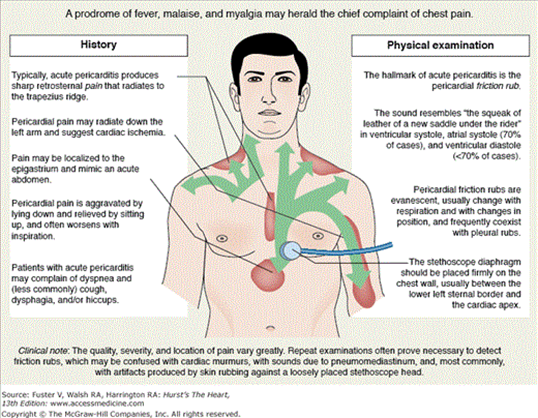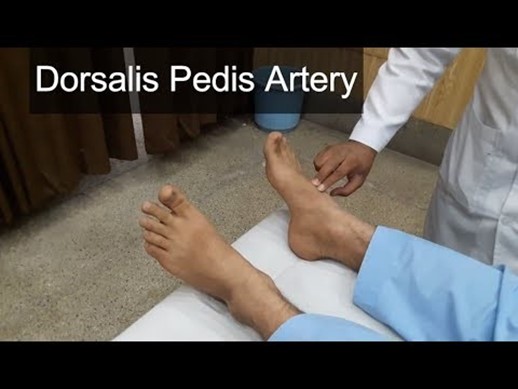A nurse is assessing a client who has pericarditis.
In which of the following areas of the client's chest should the nurse place the stethoscope to best hear a pericardial friction rub? (You will find hot spots to select in the artwork below.
Select only the hot spot that corresponds to your answer.).
A
B
C
D
The Correct Answer is {"xRanges":[101.765625,141.765625],"yRanges":[263.609375,303.609375]}
A pericardial friction rub is highly specific for acute pericarditis and is generally heard over the left sternal border.
It is often louder at inspiration but sometimes can be better heard on forced expiration while the patient bends forward.
Choice A is not the answer because it does not correspond to the left sternal border.
Choice B is not the answer because it does not correspond to the left sternal border.
Choice D is not the answer because it does not correspond to the left sternal border.

Nursing Test Bank
Naxlex Comprehensive Predictor Exams
Related Questions
Correct Answer is D
Explanation
The nurse should palpate the dorsalis pedis pulse.

This is to assess for peripheral neurovascular dysfunction, which is a potential complication of a tibial fracture.
Choice A, wrapping sterile gauze on the sharp point of the pins, is not an answer because it is not mentioned in the search results as an intervention for a client with an external fixator for a tibial fracture.
Choice B, adjusting the clamps on the fixator frame, is not an answer because it is not mentioned in the search results as an intervention for a client with an external fixator for a tibial fracture.
Choice C, maintaining the affected extremity in a dependent position, is not an answer because it is not mentioned in the search results as an intervention for a client with an external fixator for a tibial fracture.
Correct Answer is C
Explanation
This statement indicates an understanding of the teaching because shaking the inhaler helps to mix the medicine inside the canister.

Choice A is incorrect because it is not necessary to clean the cap of the inhaler once per week.
Instead, it is important to clean the inhaler at least once a week or as directed.
Choice B is incorrect because one should inhale the medication slowly, not quickly.
Choice D is incorrect because one should wait 1 minute between puffs, not 15 seconds.
Whether you are a student looking to ace your exams or a practicing nurse seeking to enhance your expertise , our nursing education contents will empower you with the confidence and competence to make a difference in the lives of patients and become a respected leader in the healthcare field.
Visit Naxlex, invest in your future and unlock endless possibilities with our unparalleled nursing education contents today
Report Wrong Answer on the Current Question
Do you disagree with the answer? If yes, what is your expected answer? Explain.
Kindly be descriptive with the issue you are facing.
